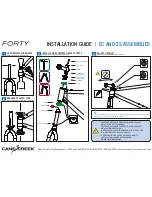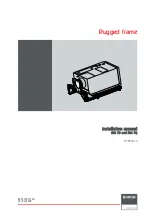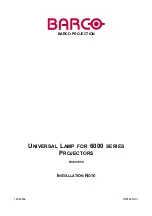
®
Wireless pH Sensor
PS-3204
4
013-14662B
Remove the Battery Compartment Door
Hold the sensor bottom-side up.
Use a coin in the slot to turn the
Battery Compartment Door
counterclockwise (left-to-right)
until the indicator on the door is
aligned with the second mark on
the sensor.
Turn the sensor bottom-side
down so that the Battery
Compartment Door can drop into
the palm of your hand. Make sure
that the battery door gasket stays on the door. The gasket
is an “O-ring” that is held in place by the tabs on the door.
Please do not touch the inside of the battery compartment.
Remove the used battery from the Battery Compartment
Door and replace it with a new identical type battery.
Note
that the battery is held in place by the small tabs on the
door
. The side of the battery with the “+” on it should be
against the door.
Replace the Battery Compartment
Door
Put the Battery Compartment Door
with the new battery back onto the
sensor. Align the indicator on the door
with the second mark, and use the
coin in the slot to turn the door
clockwise (right-to-left) until the
indicator is aligned with the first mark
on the sensor.
(See “Battery Disposal Instructions” under Technical
Support.)
Related Item
•
Coin-cell Battery Replacement Pack (10 pack) -
PS-3504
Troubleshooting the Wireless pH Sensor
•
If the Wireless pH Sensor loses Bluetooth connection
and will not reconnect, try cycling the ON button. Press
and briefly
hold
the button until the status LEDs blink,
and then release the button
•
If the sensor stops communicating with the computer
software or tablet application, try restarting the
software or application. If the problem remains, press
and hold the ON button for ten seconds and then
release the button. Turn on the sensor in the usual way.
•
Turn Bluetooth off and then turn it back on. Retry.
pH Probe Maintenance
pH Probe Storage
For a storage period of a few weeks or less, rinse the end
of the pH Probe with distilled water and put the storage
bottle back onto the end of the probe.
•
NOTE: To make more storage solution, combine equal
parts of 4 M potassium chloride (KCl) and a pH 4 buffer
solution, with a few drops of pH buffer preservative.
You may keep the pH Probe in the storage solution
indefinitely, but for long term storage, store the pH Probe
dry. After a period of dry storage, the pH Probe must be
restored to rehydrate the glass membrane (see below).
Restoring the pH Probe
Use the following procedure to improve the performance of
a slow pH Probe or to rehydrate the glass membrane after
dry storage.
1.
Clean the pH Probe using one or more of these
methods.
•
If the pH Probe is contaminated with proteins, soak the
probe in a solution of 1% pepsin in 0.1 M hydrochloric
acid (HCl).
•
If the pH Probe is contaminated with inorganic
deposits, rinse the probe with 0.1 M ethylene dintric
tetra-acidic acid (EDTA) tetrasodium solution.
•
If the pH Probe is contaminated with oil or grease,
wash the probe in a mild detergent or solvent known to
be effective for oil or grease.
•
If the pH Probe is not responding quickly, soak the
probe alternately in 12 M sodium hydroxide (NaOH)
and 1 M hydrochloric acid (HCl). Leave the probe in
each solution for one minute. Rinse completely
between soakings and end with hydrochloric acid.
2.
Soak the pH Probe in 0.1 hydrochloric acid for 30
minutes.
Second mark
Coin
slot
Battery
Compartment Door
Gasket (“O”-ring)
Battery (CR2032)
Tab
PLEASE Do Not Touch
First mark



























